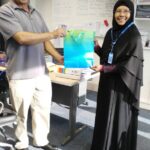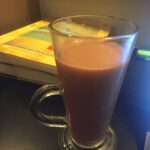Day 17, Tuesday, July 24, 2018
Yes, it was the day to leave Malaysia to go back home. I checked out from my temporary home of two weeks and took the scenic taxi ride on Highway E1 to the Kuala Lumpur International Airport.
[youtube https://www.youtube.com/watch?v=n5jkCIU-RVw?rel=0]
Video: Scenic E1 Highway of Malaysia
I reached the airport at 5 PM local time but my flight was not till 10:50 PM. Check-in of the luggage was not till 8PM, and it was just part of the waiting and sitting game till I got back to Tampa. Free WiFi and two charged external batteries were a good way to catch up on the news and read some free downloaded files from the NAE bookstore, including those on research ethics‘, educating engineers in context of new modes of learning, and the 21st-century grand challenges.
Day 18, Wednesday, July 25, 2018
International flights halfway around the world are exhausting to me but with in-flight entertainment and catching uncontrollable Zs, time does fly a little faster than it did in the 1990s on the transpacific flights. My first leg of the flight ended up in Tokyo and we reached there about 7AM local time. It was hot outside as well as inside the airport, but a short layover and a random airport security check kept it amusing for a few hours before the second leg to Dallas.
Photo: Route from Kuala Lumpur, Malaysia to Tampa, FL
The flight got a little late to Dallas and my short layover could turn into a missed flight. It was a scramble to go through immigration to the check-in of my last leg of the flight as there were several agents to help you go through the kiosks but only one agent was present for the final immigration checkout. The pre-approved TSA check slip did no good at the security gate as it was supposedly not printed on the boarding pass – so shoes out, belt out, computer out, and I finally managed to make it to the gate to the Tampa flight just when they were already boarding. I closed my exhausted eyes and landing at Tampa was the finish-line in personal endurance. My spouse was waiting for me, my energy was renewed, and I was ready to be in the driver’s seat to take us home.
I hope you enjoyed this Fulbright specialist diary that I have written for the last two weeks. Read all the entries of Day 1 through Day 18. If you want to contact me, just visit http://AutarKaw.com for contact information.
Photo: Announcement by USF on becoming a Fulbright Specialist Candidate
Specific project activities completed during grant:
Activities included facilitating four workshops –
- flipped learning,
- pragmatic strategies for improving cognitive and affective gains of students,
- scholarship of teaching and learning, and
- history and development of massive open online courses,
giving guest lectures and conduct tutorials in a course of Numerical Methods, teaching a short course on Mechanics of Composite Materials, meeting with individual faculty and administration, and created a tentative plan for the future exchange of students and faculty between UTP and USF.
Most important outcomes of the project:
The most important outcomes were to
- reinforce and model evidence-based pedagogy through workshops, classroom instruction and individual meetings with the specialist,
- make future collaboration on educational research methods publications, and
- plan for a memo of understanding between the two institutions for potential exchange of students and faculty between USF and UTP.
___________________________________________________
This material is based upon work supported by the Fulbright Specialist Grant and the products of the National Science Foundation Grants numbers 0126793, 0341468, 0717624, 0836981, 0836916, 0836805, 1322586, 1609637. Any opinions, findings, and conclusions or recommendations expressed in this material are those of the author(s) and do not necessarily reflect the views of the National Science Foundation or the Fulbright Program.



















